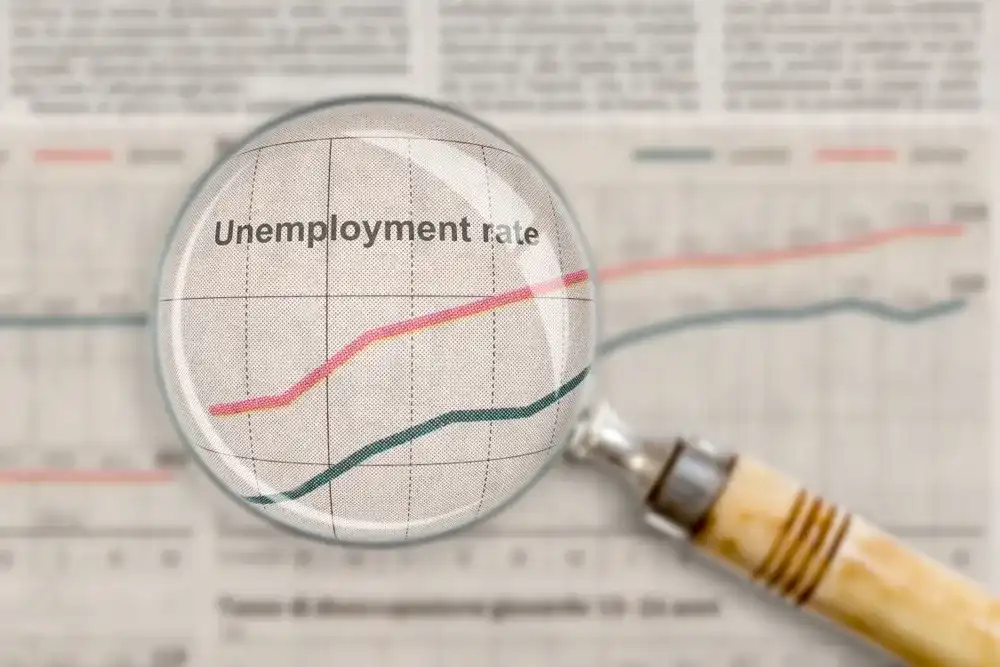Navigating the Post-Pandemic Economy: Strategies for Financial Success
In the wake of the pandemic, life has taken an unexpected turn, affecting our daily routines and wallets. The financial aftermath has been challenging for many, and even though the pandemic's grip is loosening, the world remains changed.
This article is your guide to navigating this post-pandemic reality. We're here to help you not just bounce back but thrive. From smart financial planning to savvy investments and adapting to economic shifts, we've got practical strategies to ensure your financial success in this evolving landscape. Let's gear up for a resilient and prosperous future.

Assessing the Post-Pandemic Economic Landscape
Economic shifts have reshaped the landscape in the tumultuous aftermath of the pandemic, leaving lasting impacts on industries, consumer behavior, and market trends. The unemployment rate, soaring to unseen levels since the 1930s, reached 4.9% in October 2021, reflecting 4.2 million fewer jobs than pre-pandemic February 2020. The toll on the U.S. economy, projected to be a staggering $14 trillion by the end of 2023, reflects the magnitude of the challenges faced.
The human cost, with over 1.1 million lives lost in the U.S., underscores the profound societal impact. Workplace absences and sales losses, stemming from the halt in brick-and-mortar retail, air travel, and public gatherings, significantly contributed to economic setbacks. International and domestic airline travel plunged by almost 60%, indoor dining by 65%, and in-store shopping by 43% during the height of the pandemic in the second quarter of 2020.
How do these shifts reverberate into personal finances? Let's break it down:
- Decreased Consumer Spending: Early in the pandemic, reduced consumer spending allowed individuals to redirect funds toward debt repayment.
- Emergency Financial Measures: Initiatives such as mortgage and student loan forbearance, rental assistance programs, and three rounds of government stimulus checks provided crucial financial support.
- Altered Savings Habits: Many adopted a more conservative approach, increasing savings and building emergency funds.
- Remote Work Dynamics: The rise of remote work influenced housing choices, with some opting to move to more affordable locations.
- Shift in Investment Strategies: Investors recalibrated portfolios in response to market volatility and emerging opportunities.
- Digital Transformation: Accelerated digitalization impacted businesses, influencing job markets and skill requirements.
- Increased Importance of Health Coverage: The pandemic emphasized the significance of robust health insurance coverage.
- Evolving Job Markets: Remote work trends and technology shifts led to changes in job opportunities and career paths, particularly with increased individuals embracing the side hustle culture.
As we navigate this changed economic terrain, adapting to these shifts becomes pivotal for securing financial stability and charting a course toward sustained success.

Strategies for Financial Resilience
In the face of economic uncertainties, cultivating financial resilience is key to weathering storms and achieving stability. Consider these practical tips to fortify your financial foundation:
Emergency Fund Management
Maintaining a robust emergency fund is a cornerstone of financial resilience. This fund is a financial safety net, ready to catch you when unexpected expenses pop up. Strive to save three to six months' worth of living expenses, allowing you to cover necessities without dipping into long-term savings.
Regular contributions, even if small, are vital for steadily building and reinforcing your emergency fund. Consistency in this practice ensures you're prepared for unforeseen circumstances, fostering a sense of financial security.
Debt Reduction Strategies
Effectively managing and reducing debt is super important to provide financial resilience. Prioritize your debts by choosing between the avalanche and snowball methods. The avalanche method involves tackling high-interest debts first, minimizing overall interest payments.
On the other hand, the snowball method focuses on paying off smaller debts initially, providing a psychological boost and freeing up more funds for subsequent payments. Additionally, open communication with creditors can lead to negotiation opportunities, such as reduced interest rates or customized repayment plans.
Diversify Income Sources
Diversification is not just for investments; it's a strategy that also applies to income. Explore avenues for additional income, such as taking on a side hustle or part-time job. This supplemental income can act as a buffer during financial challenges. Simultaneously, diversify your investments to spread risk and enhance returns. A well-rounded approach to income ensures a more resilient financial portfolio.
Financial Literacy Enhancement
Investing time in enhancing financial literacy pays dividends in building resilience. Engage with informative podcasts and follow reputable financial YouTubers to gain insights into smart money management. Leverage free online courses that cover essential financial principles and explore books by experts in the field.
By continuously expanding your financial knowledge, you empower yourself to make informed decisions, navigate economic shifts, and plan for a secure future.
Credit Card Debt Management
Effectively managing credit card debt is a crucial aspect of financial resilience. Choose a repayment strategy that aligns with your goals – the avalanche method to minimize interest or the snowball method for quick wins.
Consistent payments and disciplined spending habits are key to successfully reducing and ultimately eliminating credit card debt. This proactive approach strengthens your financial position and contributes to long-term stability.
Family Budgeting
Crafting a family budget using the 50/20/30 approach provides a clear roadmap for financial resilience. Allocate 50% of your budget to necessities like housing and utilities, dedicate 20% to savings and debt repayment, and reserve 30% for discretionary spending.
Regularly review and adjust your budget to reflect changing circumstances and priorities. This structured approach ensures that you live within your means while simultaneously building a financial cushion for the future.
Skill Enhancement for Career Growth
Investing in skills and career growth is a proactive strategy for financial resilience. Explore side hustles or part-time opportunities aligned with your expertise and interests. Additionally, continually enhance your skills through online courses, workshops, or certifications.
This broadens your career prospects and positions you as a valuable asset in a dynamic job market. A diversified skill set contributes to increased employability and long-term financial stability.
Health and Wellness Investment
Prioritizing health coverage is an often overlooked aspect of financial resilience. Comprehensive health insurance protects against unexpected medical expenses, preventing them from derailing your financial plans.
Ensure that you have adequate coverage for your needs, and be proactive in addressing health-related concerns. By safeguarding your well-being, you contribute to the overall resilience of your financial foundation.
Adopting these strategies collectively strengthens your financial resilience, providing a sturdy foundation to navigate challenges and achieve long-term financial success.

Investing in a Recovering Economy
As we navigate the post-pandemic economic landscape, strategic investing becomes more important than ever. Here's a guide to seize opportunities while mitigating risks in a recovering economy:
The Rise of ESG Investing
Environmental, Social, and Governance (ESG) investing has gained prominence, reflecting a commitment to sustainability and ethical practices. Companies embracing ESG principles often exhibit resilience and long-term stability. Consider ESG-focused funds to align your investments with values while pursuing financial returns.
Technology Sector's Resilience
The technology sector emerged as a standout performer, showcasing remarkable resilience during and after the pandemic. Companies involved in e-commerce, cloud computing, artificial intelligence, and digital entertainment have witnessed substantial gains. This trend may persist as technology continues to shape our evolving world.
Cryptocurrency and Blockchain
Explore the opportunities presented by cryptocurrencies and blockchain technology. Digital currencies like Bitcoin and Ethereum have garnered attention as alternative assets. Additionally, the transformative potential of blockchain in various industries signals new avenues for growth.
Renewable Energy and Cleantech
Investing in renewable energy and cleantech aligns with the global push towards sustainability. As governments emphasize green initiatives, companies involved in renewable energy, electric vehicles, and sustainable technologies are poised for growth.
Real Estate
Despite uncertainties, real estate remains a tangible and potentially lucrative investment. Consider diversifying your portfolio with real estate assets. Residential properties, commercial real estate, or Real Estate Investment Trusts (REITs) can offer stability and income potential.
Healthcare and Biotechnology
The healthcare and biotechnology sectors continue to be resilient and innovative. Investments in pharmaceuticals, biotech companies, and healthcare services can provide stability and growth opportunities, especially in the context of ongoing global health considerations.
Robo-Advisors and FinTech
Embrace the efficiency and accessibility offered by Robo-Advisors and Financial Technology (FinTech) platforms. These technologies provide automated investment management and financial services, catering to a tech-savvy generation seeking streamlined and cost-effective solutions.
Global Diversification
If you want to actively grow your wealth, you can mitigate risks by diversifying globally. Consider international investments to spread risk across different economies and industries. A well-diversified portfolio is better positioned to withstand regional economic fluctuations.
In the evolving post-pandemic economy, staying informed and diversifying your investment strategy is key. Explore opportunities in sectors like ESG, technology, cryptocurrency, renewable energy, real estate, healthcare, and FinTech. While opportunities abound, remain vigilant and adaptable, adjusting your portfolio to align with the ever-changing economic landscape.
Remember, informed decisions and a diversified approach are essential for navigating the complexities of today's dynamic investment environment.

Adapting Financial Plans
Life is full of unexpected twists, and adhering rigidly to a financial plan may feel like a lofty goal. However, maintaining financial stability is possible with flexibility and preparedness for the unforeseen. Here are actionable tips to help you recalibrate when circumstances change:
Assess the Impact
When faced with an unplanned expense, thoroughly assess its impact on your budget. Understanding the financial implications is the first step, whether it's an unexpected medical bill or a sudden repair. Calculate how this expense will affect your overall financial picture and determine a realistic timeframe for repayment.
Cover the Difference
Explore short-term solutions to cover the difference for non-negotiable financial deadlines like property taxes or college tuition. Evaluate your expenses and identify areas where you can cut back temporarily. While challenging, this approach can help bridge financial gaps. Alternatively, consider taking on a part-time job or a contract position to supplement your income, ensuring it doesn't jeopardize your primary job.
Adjust Your Goal
Sometimes, delaying a financial goal becomes a practical solution. While it may not be the ideal scenario, minimizing setbacks is crucial. Even if you can't meet the initial target, focus on increasing your monthly savings to expedite reaching your goal. The key is to remain adaptable and proactive in adjusting your financial trajectory.
Seek Financial Efficiencies
Unexpected disruptions can be frustrating, but they also present opportunities to enhance your financial efficiency. Look for short-term strategies to improve your financial position. Whether it's optimizing your budget, exploring additional income sources, or considering emergency options, proactive measures can make a substantial difference.
Life's uncertainties may test financial plans, but the ability to adapt is a valuable asset. By reassessing, covering shortfalls strategically, adjusting goals, and seeking efficiencies, you not only navigate immediate challenges but also position yourself for a more resilient financial future. Flexibility in financial decision-making is not just a strategy; it's a mindset that empowers you to thrive in the face of life's unpredictable moments.
Long-Term Financial Stability
In the post-pandemic world, securing long-term financial stability requires strategic planning and a forward-looking mindset. Here's a guide to help you master your finances and create a sustainable roadmap for lasting financial well-being:
Retirement Planning
Investing in your retirement is a cornerstone of long-term financial stability. Start early and consistently contribute to retirement accounts such as 401(k)s or IRAs. Leverage employer-sponsored plans and take advantage of employer matches to maximize your savings. Regularly reassess and adjust your retirement goals based on evolving circumstances.
Insurance Coverage
Mitigate risks to your financial stability by ensuring comprehensive insurance coverage. This includes health insurance, life insurance, and property insurance. Adequate coverage safeguards against unexpected medical expenses, protects your loved ones, and secures your assets. Regularly review and update your insurance policies to align with changing needs.
Estate Planning
Crafting a solid estate plan is essential for long-term financial security. Establish a will, designate beneficiaries, and consider creating trusts to protect and distribute your assets according to your wishes. Estate planning provides peace of mind and ensures a smooth transition of assets to heirs, minimizing potential financial complications.
Living Within Your Means
The foundation of financial stability is living within your means. Revisit the 50/20/30 plan – allocate 50% to necessities, 20% to savings and debt repayment, and 30% to discretionary spending. Master your finances by consistently adhering to this balanced approach. Regularly review your budget, cut unnecessary expenses, and redirect funds towards savings and investments.
Investing for the Future
Diversify your investments for long-term growth. Explore opportunities in sectors with sustained potential, such as technology, renewable energy, and healthcare. Balance risk and reward to optimize your investment portfolio. Regularly review and adjust your investment strategy in response to market dynamics and changing financial goals.
Mastering your finances involves a holistic approach incorporating retirement, insurance coverage, estate planning, and disciplined budgeting. By living within your means, adhering to a balanced budget like the 50/20/30 plan, and making informed long-term investment decisions, you pave the way for enduring financial stability.
The post-pandemic world poses challenges, but with strategic financial mastery, you can navigate uncertainties and build a resilient financial future.

Economic Recovery Tips and Post-COVID Financial Management Strategies
Mastering the post-pandemic economic landscape involves implementing our economic recovery tips and post-COVID financial management strategies. The key to financial success lies in proactive measures, adaptability, and strategic decision-making. Assess the impact of unexpected expenses, cover shortfalls strategically, and adjust goals when necessary.
Diversify investments to align with evolving market trends, and explore opportunities in sectors like technology, renewable energy, and healthcare. Prioritize long-term stability through retirement planning, insurance coverage, and estate planning.
As exemplified by the 50/20/30 plan, living within your means forms the bedrock of financial resilience. In this dynamic environment, being informed and flexible is crucial. Navigate uncertainties with confidence, and position yourself for sustained financial growth. For more insights and updates, follow the Cash Store blog for ongoing guidance on mastering your finances.
The content on this page provides general consumer information or tips. It is not financial advice or guidance. Each person’s circumstances are unique. The Cash Store may update this information periodically. This information may also include links or references to third-party resources or content. We do not endorse the third-party or guarantee the accuracy of this third-party information. There may be other resources that also serve your needs.
More Articles
What to Know About Crypto-Backed Loans
Curious about using your crypto as collateral? Discover how crypto-backed loans work, their benefits, risks, and what to consider before borrowing.
Read More >How Does Installment Loan Approval Work?
Curious about how installment loan approval works? Learn about the key factors lenders consider, the application process, and tips to improve your chances of approval.
Read More >Is it Better to Get an Installment Loan or Line of Credit?
Installment loan or line of credit—which is right for you? Learn the key differences, pros and cons, and how to choose the best option for your financial needs.
Read More >Loan Amount is subject to loan approval. Loan terms and availability may vary by location. Approval rate based on complete applications received across all Cash Store locations. Customers can typically expect to receive loan proceeds in less than 20 minutes; however, processing times may vary. Loans / Advances are provided based on approved credit. Each applicant for credit is evaluated for creditworthiness.
Please see the Licenses and Rates page for additional product details.
Cash Store offers consumer credit products that are generally short-term in nature and not intended for long-term borrowing needs.
In Texas, Cash Store is a Credit Services Organization. Loans are provided by a non-affiliated third-party lender. Please see the Licenses and Rates page for links to Consumer Disclosures and choose the one for the product and amount that most closely relates to your loan request.
Customer Portal residency restrictions apply. Availability of funds may vary by financial institution.

